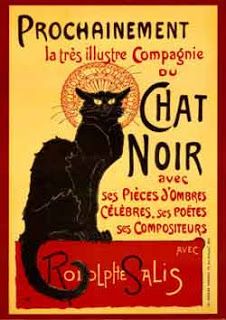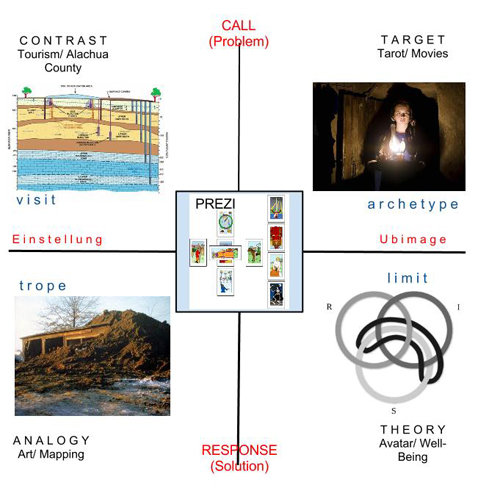
Heuretics
The Institute-wide task force on the future of MIT education produced Recommendations that are a good point of departure for innovation. The list of intentions is insightful, relative to projections of apparatus theory. We will discuss specifically the first eleven recommendations elsewhere. For now the point to emphasize is that however appropriate the recommendations are, they do not attempt to describe, let alone prescribe, the nature of the innovations in pedagogy and curriculum called for, beyond reminders of the traditions and commitments that historically have made MIT so successful. This hesitation at the threshold of invention is not a shortcoming but an invitation to the MIT community to begin the process of invention. This invitation is intriguing and challenging in referring to "the magic of MIT" (an emergent and unpredictable effect of a complex system), and in implying that MIT as an institution or collective entity is as intelligent and creative as are the individuals who staff it. The basic assumption is that MIT twenty years from now will function differently, perhaps radically so, from the way it works now. In other words, the imagined future of education is not just "media literacy."
Electracy as a mode of study includes "heuretics" (the logic of invention), assuming that the transformation that it proposes must be and can be invented. Critical analysis of the discourse on method in the Western tradition revealed that every text introducing what proved to be a fundamental innovation in thought, reason, and procedure, beginning with Plato's Phaedrus and continuing through avant-garde manifestos in modernism, was organized around a rhetorical matrix, a device consisting of five operators: Contrast, Analogy, Theory, Target, tale. The challenge of creative thinking is that the outcome is unknown (be definition). Or rather, we have a goal that guides the process--an electrate mode of learning that is global, syncretic, holistic, online (blended), including service, engaging with real-world problems, and the other principles itemized in the recommendations. How exactly are these principles to be enacted?
The first step is just to outline the function of each operator. The Problem (specifically in this Group--an electrate pedagogy) is articulated in terms of the pair Contrast-Target: Contrast is being rejected (obsoleted). Plato in outlining his ideal city and its literate education rejected Homeric models of learning. Target describes the affordances of the new condition for which the method is being created (in Plato's case, the Academy with its devices of reading and writing, and mathematics). The Solution is (experimentally) articulated in the pair Analogy-Theory. Analogy identifies an existing discourse in a diferent domain that manifests some of the desired features. For Plato, medical diagnosis demonstrated the powers of analysis in the physical realm that he desired for metaphysics. Theory is an existing account of reality adopted (provisionally) to guide the choices and direction of the design. Plato worked in the tradition of Pythagoras, with Socrates as his immediate inspiration. "Tale" refers to the mode or genre, the form, devised in which to assemble and integrate the four sets of resources (each resource being inventoried for its relevant features), to bring them into conversation. The tale partially explains the emergent instructions, and partly demonstrates them (it does what it says). Plato invented the dialogue form as the means to support the bootstrapping of the Academy into literacy. The dramatized conversations of Socrates (usually) with one or more interlocutors constituted an interface metaphor--the scene of conversation brought students natively oral into the experience of dialectic, the mode of reasoning native to literacy.
The goal of this and related Groups is to devise a CATTt that does for electrate school what Plato's dialogue did for the literate Academy.
Share this
Comments

CATTt
A meta-CATTt has guided most of my experiments with electracy. A useful feature of the CATTt is that it accomodates any group of resources, and produces or generates a poetics or set of instructions specific to those resources. Each of my graduate seminars over the past couple of decades tested a different CATTt, but the category of resource for each slot in the template repeated. Here is an overview of the genre formulated for the seminars:
The CATTt slots function like a spread in Tarot reading (or in any template): the slot itself is active and inflects any resource it receives. The syntax of CATTt begins with the articulation of a problem: Contrast repels; Target attracts. Contrast: the extant metaphysics of literacy are fine as far as they go, but are relative to their apparatus. Target: The Internet requires a native metaphysics. The C & T are kenotic, emptying out, opening a site for invention. The procedure is to inventory the respective resources to understand the terms of the problem, both what is being rejected, that for which an alternative is sought, and the affordances of the new condition. Solution is generated from an inventory of Analogy and Theory. Analogy is an extant related practice suggesting possibilities of the new discourse; Theory identifies the principles structuring the invention as a whole (the What of the enterprise). The heuretic produces four inventories, four lists, each list inflected by its slot. A pattern of correspondences emerges in the intertext created by the juxtaposition of lists. This pattern is configured into a poetics, a forumla or recipe of instructions for composing (in our case) an electrate metaphysics. The blog medium supports and organizes this process of collection, inventory, and correlation.
While we will adapt this meta-CATTt to the project of a poetics for electrate pedagogy, our version may also be treated as a demonstration of a rheatoric, with free substitution of resources, to be tested by others wanting to experiment with heuretics. The following diagram represents in emblem form the terms of a CATTt for one of my seminars.

Routine. This blog was used to support heuretic projects for several graduate seminars.
